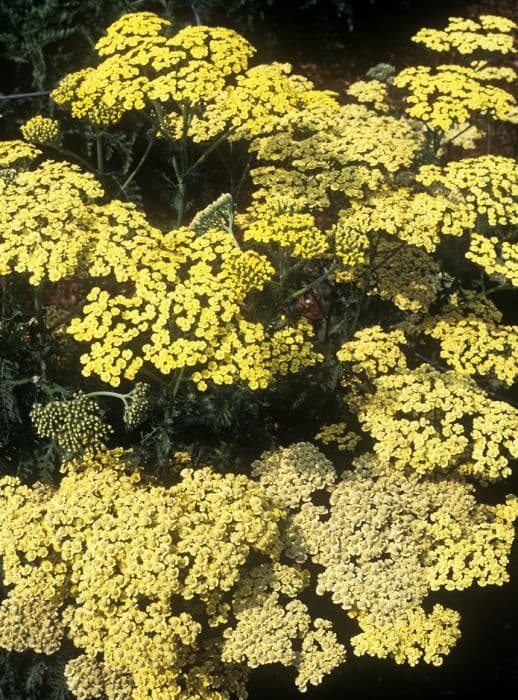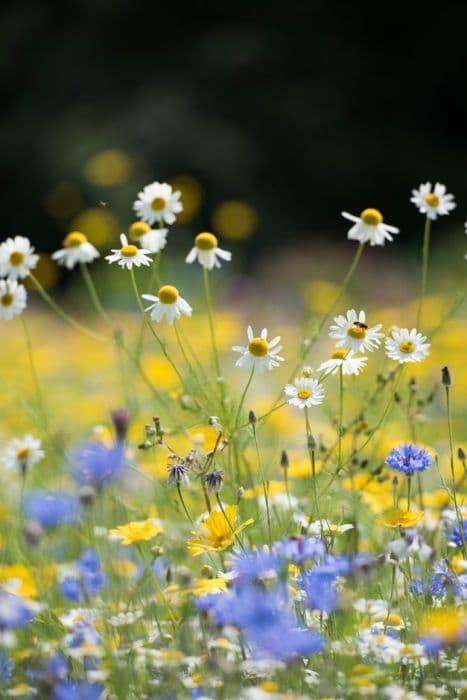Dahlia Dahlia coccinea

ABOUT
The dahlia coccinea, commonly known as the scarlet dahlia, is a strikingly beautiful flowering plant with a vivid display of color and an intricate structure. It possesses a lush green foliage backdrop which sets the stage for its remarkable blooms. The flowers of the scarlet dahlia are its most notable feature; they are large and layered with pointed petals that radiate outwards in a stunning, almost geometric pattern. The color of the petals is a vibrant red-orange, reminiscent of the hue of a fiery sunset or the glowing embers of a warm fire. Each individual petal of the scarlet dahlia has a tapered shape, with edges that might appear slightly rolled back, giving the flower a distinct and dimensional quality. The center of the flower is comprised of a group of smaller, tubular petals and reproductive structures that contrast in color, often appearing in shades that complement or accentuate the fiery tones of the outer petals. The stems of this plant are sturdy and upright, supporting the flamboyant floral display with a certain elegance. Leaves of the scarlet dahlia are compound in nature, meaning they are divided into several smaller leaflets that are arranged oppositely or alternately along the stem. The texture of the leaves can be slightly coarse, feeling somewhat serrated to the touch due to their subtle edges. Overall, the scarlet dahlia is a plant that exudes a bold presence in any garden, drawing the eye with its captivating flowers that can bloom from midsummer until the first frosts of fall, extending a tapestry of color throughout the growing season.
About this plant
 Names
NamesFamily
Asteraceae.
Synonyms
Red Dahlia, Orange Dahlia.
Common names
Bidens coccinea, Dahlia pinnata, Georgina coccinea, Georgina pinnata
 Toxicity
ToxicityTo humans
Dahlia pinnata, commonly referred to as dahlia, is considered non-toxic to humans. Ingesting the plant typically does not lead to poisoning or severe adverse effects. However, it is important to note that sensitivity can vary from person to person, and some individuals might experience mild gastrointestinal discomfort if parts of the plant are ingested. It is always advisable to avoid eating ornamental plants due to the potential for pesticides or other chemicals.
To pets
Dahlia pinnata, which is the most common name for Dahlia coccinea used in relation to pets, is generally not considered highly toxic to pets such as dogs and cats. If a pet ingests parts of a dahlia, they might exhibit mild gastrointestinal symptoms such as vomiting or diarrhea. These are often self-limiting and do not usually require intensive treatment. Nonetheless, it is wise to prevent pets from consuming plants that are not intended for their consumption to avoid any potential health issues. If a pet exhibits severe symptoms, it is recommended to consult a veterinarian.
 Characteristics
CharacteristicsLife cycle
Perennials
Foliage type
Deciduous
Color of leaves
Green
Flower color
Varies
Height
4-5 feet (1.2-1.5 meters)
Spread
2-3 feet (0.6-0.9 meters)
Plant type
Bulb
Hardiness zones
8
Native area
Mexico
Benefits
 General Benefits
General Benefits- Ornamental Value: Dahlias are highly prized for their varied and striking blooms, adding aesthetic appeal to gardens and landscapes.
- Pollinator Attraction: Dahlia flowers attract bees, butterflies, and other important pollinators, helping to support local ecosystems.
- Cut Flowers: Their long-lasting flowers and wide array of colors make dahlias popular for bouquets and floral arrangements.
- Color Variety: They come in almost every color, except true blue, providing gardeners with numerous design options.
- Long Blooming Season: Dahlias bloom from midsummer through fall, providing vibrant colors when many other plants have ceased blooming.
- Gardening Education: Growing dahlias can be a rewarding hobby that offers opportunities for learning about plant care and propagation.
- Community Engagement: Dahlia enthusiasts often share plants, participate in shows, and join societies, fostering a sense of community.
 Medical Properties
Medical Properties- This plant is not used for medical purposes.
 Air-purifying Qualities
Air-purifying QualitiesThis plant is not specifically known for air purifying qualities.
 Other Uses
Other Uses- Dahlia coccinea tubers can be used as a substitute for potatoes in some regions, where they are roasted or boiled for consumption.
- The petals of the Dahlia coccinea are edible and can be used in salads or as a colorful garnish on dishes for a splash of color and mild taste.
- In the textile industry, dyes can be extracted from the flowers of Dahlia coccinea to color fabrics naturally.
- These flowers are often used in the craft industry to make natural confetti for celebrations, as they are more eco-friendly than plastic alternatives.
- Dahlia coccinea flowers are commonly used in floral arrangements for events and as cut flowers thanks to their vibrant colors and full-bodied appearance.
- The stalks of the plant can be used to make paper and are valued for their fibrous quality.
- Gardeners often use the spent flowers and foliage as compost material to enrich the soil with organic matter.
- Breeding and cross-pollinating Dahlia coccinea with other Dahlia varieties is a common practice to create new flower forms and colors for horticultural diversity.
- In photography and painting, the striking blooms are frequently used as subjects to explore color contrast and composition due to their vivid hues.
- Collecting the seeds of Dahlia coccinea is a hobby for some enthusiasts who aim to conserve the genetic diversity of the species or engage in seed swapping.
Interesting Facts
 Feng Shui
Feng ShuiThe plant_name is not used in Feng Shui practice.
 Zodiac Sign Compitability
Zodiac Sign CompitabilityThe plant_name is not used in astrology practice.
 Plant Symbolism
Plant Symbolism- Dignity and Elegance: Due to their sophisticated bloom structure, dahlias are often associated with poise and dignity.
- Change and Variety: The dahlia comes in many colors and forms, symbolizing diversity and embracing change.
- Commitment and Bond: With their long-lasting flowers, dahlias represent a lasting bond and a commitment to an idea or person.
- Creativity: Dahlias inspire creativity because of their myriad shapes and colors, prompting people to think imaginatively.
- Inner Strength: Dahlia blooms late in the summer and often lasts until the first frost, symbolizing inner strength and the ability to withstand challenging conditions.
 Water
WaterDahlias should be watered deeply about two to three times per week, more often if you’re in a hotter, drier climate. Providing 1 to 2 gallons of water each time should be sufficient to keep the soil moist but not soggy. During peak blooming season, Dahlias may require more frequent watering, especially if the weather is very warm or windy. It's important not to water the foliage directly to avoid fungal diseases; instead, water at the base of the plant. Decrease watering as the season winds down to encourage the tubers to harden off for winter dormancy.
 Light
LightDahlias thrive in full sun, requiring at least 6 to 8 hours of sunlight per day. An ideal spot for Dahlias is one where they receive morning sunlight and some partial shade during the hottest part of the afternoon, although they can handle full sun all day. Avoid placing them in heavily shaded areas as this can impede their growth and reduce flowering.
 Temperature
TemperatureDahlias prefer moderate temperatures and will grow best when daytime temperatures are between 60°F and 70°F. They can withstand temperatures up to 95°F, but prolonged heat can stress the plants. Dahlias are sensitive to frost, and temperatures dropping to 32°F can kill the plant. It's important to wait to plant them outside until all danger of frost has passed, and they must be dug up or protected once frost is imminent in the fall.
 Pruning
PruningPruning, or deadheading, Dahlias encourages more blooms and keeps the plant looking tidy. Remove spent flowers by cutting back to a set of leaves or a growth point on the stem. This can be done every few days to maintain continual blooming. Pruning should be more intense at the end of the season when cutting back the plants after the first frost to prepare them for winter storage.
 Cleaning
CleaningAs needed
 Soil
SoilThe best soil mix for a Garden Dahlia is a well-draining, fertile loam with an abundance of organic matter. The soil should be slightly acidic to neutral, with an ideal pH range of 6.5 to 7.0. A recommended mix would consist of two parts garden soil, one part peat moss or compost, and one part sharp sand or perlite to improve drainage.
 Repotting
RepottingGarden Dahlias, grown from tubers, typically do not require frequent repotting. They should be planted in the ground or in pots at the beginning of the growing season and lifted and stored during the winter. However, if grown in containers, they may benefit from repotting every two to three years to refresh the soil and accommodate tuber growth.
 Humidity & Misting
Humidity & MistingGarden Dahlias prefer moderate humidity levels and do not require specific humidity adjustments. They thrive in outdoor conditions where humidity naturally fluctuates. To achieve best results, focus on maintaining proper soil moisture through regular watering rather than managing humidity levels.
 Suitable locations
Suitable locationsIndoor
Ensure bright light, and pot in well-draining soil.
Outdoor
Plant in full sun, rich soil, and provide consistent moisture.
Hardiness zone
8-11 USDA
 Life cycle
Life cycleThe Red Dahlia, or Dahlia coccinea, begins its life cycle as a seed, which when sown in fertile, well-drained soil and given proper warmth, germinates. After germination, the seedling emerges, develops true leaves, and continues to grow into a vegetative plant with a sturdy stem and lush foliage. As it matures, the Red Dahlia produces distinctive bright flower heads, which bloom prolifically from midsummer until the first fall frosts. After flowering, the plant sets seed which can be collected for propagation, or it may produce tuberous roots that can be divided and overwintered in frost-free conditions. If not overwintered, the plant will die back with heavy frost, completing its annual cycle, though the parent plant can live on through its seeds or tubers. These tubers must be replanted in the spring to start the growth cycle anew.
 Propogation
PropogationPropogation time
Late winter-early spring
The popular method for propagating Dahlia coccinea, commonly known as Dahlia, involves the use of tubers. These tubers, which are the swollen, underground storage parts of the plant, should be divided during the dormant season, typically in late winter or early spring before new growth begins. Each section must include at least one "eye" or growth point from which the new Dahlia plant will sprout. The divided tubers are then planted about 4 to 6 inches (10 to 15 centimeters) deep in well-drained soil after any chance of frost has passed. Providing a sunny location and occasional watering will encourage growth, leading to a flourishing Dahlia plant with vibrant blooms in the summer and fall seasons.









